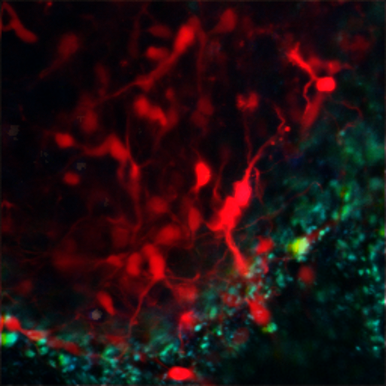How do neural cells respond to ischemia?

A group of researchers from the Lomonosov Moscow State University, in collaboration with their Irish colleagues from the University College Cork, has studied the early response of cells to ischemia, which is a restriction in blood supply to tissues, resulting in cell death. The article describing the results of their studies is published in Genome Biology.
Dmitry Andreev, PhD, senior research fellow at the A.N. Belozersky Institute Of Physico-Chemical Biology and Ivan Shatsky, PhD, professor at the same institute, described the results.
"The study became possible due to the development of next-generation sequencing (NGS), which caused a real revolution in the life sciences. In particular, we used the ribosome profiling technique which allows the capture of a "snapshot" of all protein synthesis in the cell at a given time. The protein synthesis in the cell is driven by ribosomes, which are huge macromolecular machines capable of reading the information encoded in the messenger RNA and synthesizing corresponding proteins. At any time, thousands of various proteins are being synthesized by ribosomes. When a change in external conditions occurs, ribosomes can quickly switch to the other messenger RNA and begin to synthesize the proteins necessary for adaptation to new conditions.
"We decided to use this method to study the changes in gene expression in the cells upon oxygen and glucose deprivation," Andreev explains. "This is a model for studying ischemia."
Prolonged ischemia always leads to irreversible tissue damage, and as a consequence, to cell death. However, for a short time, the stressed cells are still viable and can be rescued, thereby preventing the devastating effects of ischemia. That is why understanding of the processes occurring in a cell in the early hours and minutes after ischemia can have a very important fundamental and practical significance.
The researchers have studied the early response to ischemia in the first hour after stress. It appeared that within 20 minutes after the stress, significant changes in the synthesis of proteins occur. It is interesting that the most significant changes occur in the synthesis of proteins involved in the mitochondrial respiratory chain. Apparently, the cell tries dramatically to adapt to new conditions and to switch to "alternative" energy sources in order to avoid death.
The main paradigm of regulation of respiration in the cell signaling pathway is a family of transcription factors known as HIF (hypoxia inducible factor). This transcription factor activates expression of several genes involved, for example, in glucose transport or in the formation of new blood vessels. Under normal conditions, when the oxygen in the cell is sufficient, specific prolyl hydroxylase enzymes constantly modify regulatory subunits of HIF. Thus, HIF remains turned off. Once the oxygen level in the cell falls below a certain threshold, prolyl hydroxylase, which requires oxygen for activity, turns off, while HIF stabilizes and begins to work.
The HIF signaling cascade is also important because its activity is necessary for the survival of a variety of tumors, as many cancer cells present with chronic shortage of oxygen due to defects in the blood supply. In order to survive, they have to adapt to conditions of hypoxia. Therefore, HIF is a very promising target for cancer therapy.
As an indication of the scientific interest in this family, there are more than 12,000 scientific studies on the subject since it was first identified in 1995.
Importantly, the researchers have found that the early changes in gene expression observed upon oxygen and glucose deprivation precede the response of the HIF transcription factors and do not overlap with it. Moreover, the new paths of regulation may directly affect the HIF signaling pathway. For example, one of the most striking cases of regulation is an increase in synthesis of UBE2S protein, which is directly involved in the degradation of the regulatory HIF subunit. This is an early system of regulation that was not previously appreciated. There were no approaches that could reliably detect these early changes prior to the development of the ribosomal profiling method.
More information: Oxygen and glucose deprivation induces widespread alterations in mRNA translation within 20 minutes, Genome Biology 2015, 16:90 DOI: 10.1186/s13059-015-0651-z

















